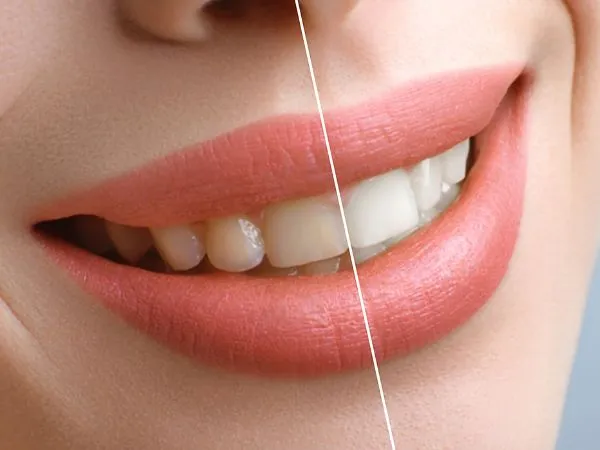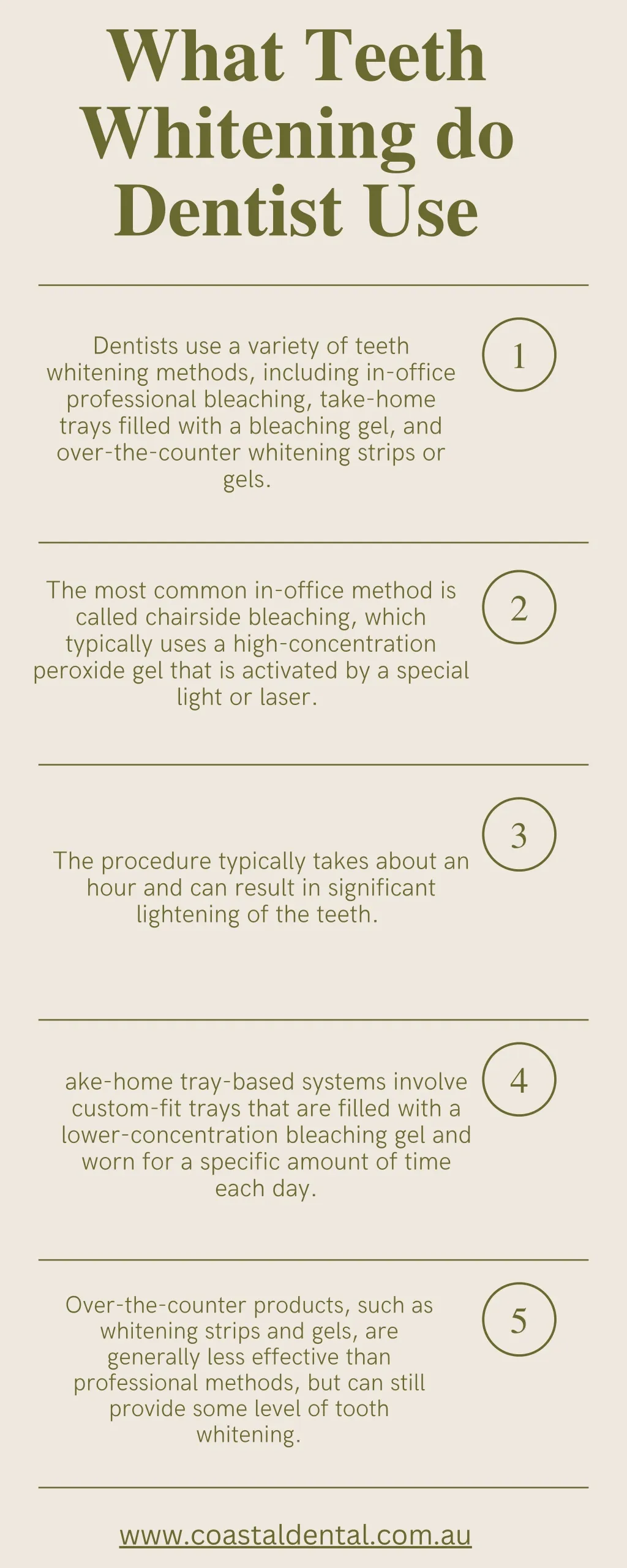What is Professional Teeth Whitening
Professional teeth whitening refers to cosmetic dental procedures performed by licensed dentists to lighten the shade of your teeth. This is a popular treatment for those looking to enhance their smile and boost their confidence. Unlike over-the-counter whitening products, professional teeth whitening offers stronger bleaching agents and is administered under the careful supervision of a dental professional. This ensures both the effectiveness and safety of the treatment. The process typically involves a consultation, examination, and the application of a whitening solution to the teeth. Dentists can tailor the treatment to your specific needs and the extent of discoloration, providing a more personalized approach compared to generic whitening options available in stores. This personalized approach takes into account factors such as the current shade of your teeth, the type of staining present, and any existing dental work.
Types of Professional Teeth Whitening
Dentists offer primarily two types of professional teeth whitening: in-office whitening and at-home whitening kits. Each method has its own advantages, and the best choice depends on your individual needs, preferences, and lifestyle. In-office whitening provides immediate results, while at-home kits offer more convenience and flexibility. Your dentist will evaluate your oral health and discuss your goals to determine the most suitable option for you. Both methods utilize professional-grade whitening agents, but the concentration and application methods differ. Understanding the nuances of each type helps you make an informed decision and achieve your desired brighter smile.
In-Office Whitening

In-office whitening, also known as chair-side whitening, is a procedure conducted in the dentist’s office. This method typically involves a higher concentration of hydrogen peroxide or other bleaching agents than what is available in at-home kits. The dentist first protects your gums and soft tissues with a protective barrier. Then, the whitening solution is applied to the teeth, and a special light or laser may be used to accelerate the whitening process. The entire procedure usually takes about an hour or two, and you can often see noticeable results immediately. This is an excellent option for those seeking rapid results or who prefer the convenience of having the procedure done by a professional. This process is closely monitored to ensure safety and minimize potential side effects, such as tooth sensitivity.
How In-Office Whitening Works
The in-office teeth whitening process is a well-defined procedure. After a thorough cleaning and examination to ensure there are no underlying issues such as cavities or gum disease, the dentist isolates the teeth to be whitened. This involves retracting the lips and cheeks and applying a protective barrier to the gums. The whitening agent, usually a high-concentration hydrogen peroxide gel, is then applied to the teeth’s surface. A special light or laser is often used to activate the whitening agent, speeding up the process. The gel is left on the teeth for a specific amount of time, typically in intervals, and then removed. The dentist will repeat this process until the desired level of whitening is achieved. After the procedure, a fluoride treatment may be applied to reduce sensitivity.
Benefits of In-Office Whitening
The primary benefit of in-office whitening is the immediate results. You can walk out of the dentist’s office with a significantly brighter smile in just one or two sessions. The treatment is performed by a trained professional who can carefully monitor the process and address any potential issues, such as increased tooth sensitivity, promptly. The higher concentration of whitening agents used in-office is more effective at removing stubborn stains and discoloration caused by coffee, tea, or smoking. In-office whitening can also be a more comfortable and convenient option for those who find it difficult to adhere to the regimen required for at-home kits. This is an ideal choice for individuals who have an important event or want to see fast, dramatic changes in their smile.
At-Home Whitening Kits Provided by Dentists

In addition to in-office whitening, dentists also offer custom-made at-home whitening kits. These kits provide a more gradual approach to teeth whitening and are often a more affordable option. The dentist takes impressions of your teeth to create custom-fitted trays. These trays are designed to fit your teeth perfectly, ensuring that the whitening agent makes consistent contact with the tooth surfaces and minimizes the risk of gum irritation. The kits typically include a lower concentration of the bleaching agent compared to in-office treatments, making them gentler on the teeth. At-home whitening requires you to wear the trays with the whitening gel for a specified period, usually for a few hours a day or overnight, over several weeks. This method is convenient, allowing you to whiten your teeth at your own pace and in the comfort of your home.
How At-Home Whitening Kits Work
At-home whitening kits work by utilizing custom-fitted trays filled with a whitening gel, usually containing carbamide peroxide or hydrogen peroxide. The dentist will provide detailed instructions on how to use the trays and apply the gel. You insert the trays into your mouth, ensuring that the gel covers the surfaces of your teeth. The trays are then worn for the prescribed amount of time, which may vary depending on the concentration of the whitening agent and the dentist’s recommendations. Over time, the whitening agent penetrates the enamel and dentin, breaking down the stains and discoloration. The custom-fitted trays are crucial because they prevent the gel from leaking onto the gums, reducing the risk of irritation. Regular use, as directed by your dentist, will gradually lighten your teeth, providing noticeable results over several weeks.
Advantages of At-Home Whitening Kits
At-home whitening kits offer several advantages. They are generally more affordable than in-office whitening. The convenience of being able to whiten your teeth at home, according to your schedule, is a major benefit. The custom-fitted trays ensure that the whitening agent is applied evenly and safely, reducing the risk of gum irritation. Because the concentration of the whitening agent is lower, the potential for tooth sensitivity is often less than with in-office treatments. Dentists can also provide you with detailed instructions and guidance, ensuring that you achieve the best possible results while minimizing potential side effects. At-home kits are a practical solution for maintaining the brightness of your smile over time and for touch-ups after an in-office treatment.
Comparison of In-Office and At-Home Whitening

Choosing between in-office and at-home whitening depends on your priorities. In-office whitening offers immediate results, making it ideal for special events or quick transformations. It provides the advantage of being performed by a dental professional who can closely monitor the process and address any issues promptly. At-home whitening kits are more cost-effective and offer greater convenience. They allow you to whiten your teeth at your own pace and in the comfort of your home. Both methods use professional-grade whitening agents and, when used under the guidance of a dentist, are considered safe and effective. Consider your budget, time constraints, and desired results when making your decision. Many people choose a combination of both, using in-office whitening to jump-start the process and at-home kits for maintenance.
Factors Affecting Teeth Whitening Results
Several factors can influence the effectiveness of teeth whitening treatments. The type and severity of the staining are significant. Extrinsic stains, those on the surface of the teeth caused by coffee, tea, or tobacco, generally respond well to whitening treatments. Intrinsic stains, which are within the tooth structure, may be more resistant and require multiple treatments. The original shade of your teeth also plays a role; individuals with naturally darker teeth may see less dramatic results. The presence of dental work, such as fillings, crowns, and veneers, means these will not whiten and may require replacement to match the new shade of your natural teeth. Following post-whitening care instructions, such as avoiding staining foods and beverages, is crucial for maintaining your results. Your dentist will consider these factors and discuss realistic expectations during your consultation.
Cost Considerations for Professional Teeth Whitening
The cost of professional teeth whitening varies depending on the type of treatment and the dentist’s fees. In-office whitening is typically more expensive than at-home kits due to the professional services and higher concentration of whitening agents. The price can also be affected by the geographic location of the dental practice. While teeth whitening is generally considered a cosmetic procedure and may not be covered by dental insurance, some dental plans may offer discounts or coverage for certain aspects of the treatment. When considering the cost, it is important to factor in the long-term benefits, such as increased self-confidence and a brighter smile. Discuss the cost and payment options with your dentist during your consultation, and consider the value of investing in a professional treatment for the best possible results and safety.
In conclusion, teeth whitening treatments offered by dentists provide effective and safe options for achieving a brighter smile. In-office whitening offers immediate results, while at-home kits provide convenience and affordability. Your dentist can help you determine the best approach based on your specific needs and oral health. Understanding the different methods, the factors that affect results, and the associated costs will help you make an informed decision and achieve a radiant, confident smile. Always consult with your dentist to discuss your options and create a personalized treatment plan.
